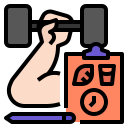Mastering Home Workouts as a Beginner
Chosen theme: Mastering Home Workouts as a Beginner. Start strong with simple, confidence-building routines that fit your space, your schedule, and your energy. Learn, move, and grow—then subscribe to join our supportive beginner community.

Your First Steps: Setting Up a Beginner-Friendly Home Workout Space
Pick a small, reliable spot—a mat-sized corner near a window or wall—so your beginner workouts always have a home. Consistency beats perfection. A visible mat becomes a daily nudge that says, “Start now.”

Foundational Moves Beginners Should Master at Home
Think “sit between your heels” for squats and “close the car door with your hips” for hinges. As a beginner, practice slow bodyweight reps. Film one set weekly to compare form—small improvements add momentum you can feel.
Week 1: Learn and Log
Focus on technique and consistency over intensity. Three short sessions: five moves, two easy sets. Write what you do. Beginners gain clarity by tracking, and writing keeps future you honest when motivation dips unexpectedly.
Week 2: Add Reps or Time, Not Both
Nudge progress by increasing total reps or time under tension, while keeping rest steady. This gentle progression lets beginners adapt without overwhelm. If any movement aches, regress variation and celebrate that smart, safe choice.
Weeks 3–4: Variation and Recovery
Introduce tempo work—three seconds down on squats, controlled push-ups—and one new accessory move. Keep at least one easy day. Many beginners overreach here; instead, protect sleep, hydrate, and comment your wins to inspire others.


A Six-Minute Dynamic Warm-Up
March in place, arm circles, hip hinges, bodyweight squats, and an easy plank. Keep it rhythmic. Beginners often feel instantly better after two minutes, but finish all six so your joints and mind are fully engaged.
Tempo and Range of Motion
Slow down the hardest part of each rep and move through a comfortable range, not the deepest range. Beginners who control tempo learn body awareness faster and reduce irritation that often comes from rushing or bouncing.
Cool Down, Breathe, and Log One Note
Two minutes of nasal breathing and gentle stretches signal recovery. Write one sentence about what felt good. That tiny reflection helps beginners notice progress and return tomorrow with calmer nerves and clearer intentions.



Fueling Beginner Home Workouts Without Overthinking
Pre-Workout Snacks for Beginners
Try a banana and yogurt, or toast with peanut butter, thirty to sixty minutes before training. Keep it light and familiar. The right snack helps beginners feel steady instead of sluggish or uncomfortably full mid-set.
Hydration and Electrolytes Made Easy
Sip water throughout the day and add a pinch of salt to one glass if you’re a heavy sweater. Beginners often mistake dehydration for fatigue. Keep a bottle in your workout corner as a visual cue.
Recovery Plates Without Measuring
Think plate method: half colorful produce, a palm-sized protein, a cupped-hand carb, a thumb of healthy fats. Beginners don’t need perfection—just repeatable choices that support tomorrow’s energy and make consistency feel almost automatic.
Time-Smart Routines for Busy Beginners
Set a timer for eight minutes: squats, wall push-ups, band rows, plank. Cycle calmly, not frantically. Beginners love this because it ends before excuses begin. Share your score, and we’ll cheer you on publicly.
Time-Smart Routines for Busy Beginners
Do a 90-second movement break every hour: 15 squats, 10 countertop push-ups, 20 marching steps. Beginners gain surprising strength through frequency. It feels playful, not punishing, and keeps your habit alive on chaotic days.
Time-Smart Routines for Busy Beginners
Choose a minimum you can always do—one set of three moves. If motivation crashes, do just that. Beginners who honor a personal minimum stay consistent, avoid guilt spirals, and return stronger next session. Comment yours today.
